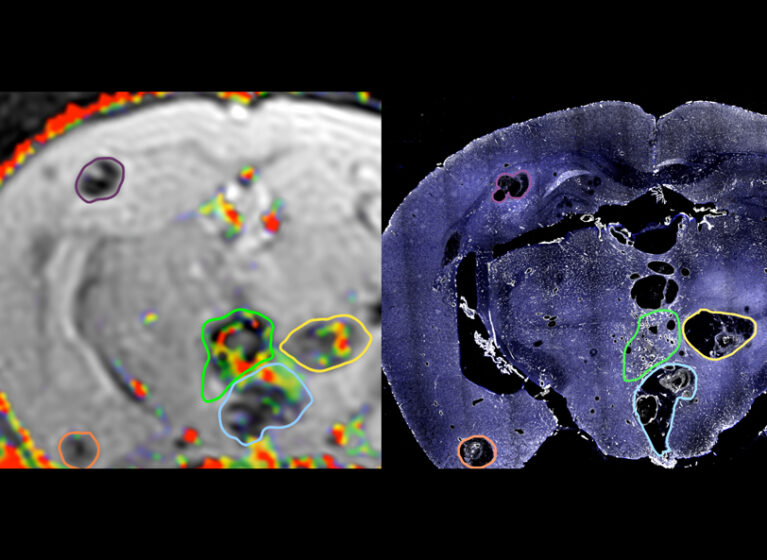
With a strong clinical research program for cerebral cavernous malformations (CCMs), UVA Health is working to find ways to improve care for this condition.
This type of research is one of many reasons why UVA Health became the first hospital in the southeastern United States to receive a Center of Excellence designation by the Alliance to Cure Cavernous Malformation (formerly the Angioma Alliance).
Research to Better Understand & Treat CCMs
CCMs are clusters of abnormal, hyalinized capillaries surrounded by hemosiderin deposits and a gliotic margin found in the brain or spinal cord. The clinical presentation of this condition varies widely, causing severe symptoms such as intractable seizures, progressive neurological deterioration, and hemorrhagic stroke in some patients. Others, however, remain asymptomatic.
The causes of this presentation heterogeneity remain poorly understood, but Petr Tvrdik, PhD, is leading research at UVA Health to answer this question.
Unlocking Answers About CCMs Using Mouse Models & Improving Imaging
Researchers use transgenic mice to delete the causative genes in the mouse brain vasculature during their juvenile development. These animals develop brain lesions that faithfully recapitulate the cellular and anatomical features that are seen in patients with this disease.
“The validity of this animal model allows us to dissect the mechanisms driving this vascular pathology, and test new experimental therapies for this severe disease,” Tvrdik explains.
Tvrdik with collaborators also improved MRI imaging and analysis of CCM lesions, which could help clinicians stratify CCMs by permeability and correlate with molecular profiles of these lesions. “This work may allow clinicians to better prognosticate the risk for bleeding,” he says.
Focused Ultrasound for CCMs
Additionally, researchers are studying therapies for CCMs using focused ultrasound.
“We manipulate mouse cavernomas with focused ultrasound to halt the progression of these lesions, using several different paradigms,” says Tvrdik. “We believe this pre-clinical research has the potential to inspire and inform clinical practice.”
Meeting Rigorous Requirements for The Best Care
UVA Health became an Alliance to Cure Cavernous Malformation Center of Excellence in 2021. It’s now among 12 such centers in the country and only three in the southeast. The alliance is an international organization dedicated to improving treatment for CCMs.
Centers of Excellence must meet rigorous standards demonstrating the ability to provide the highest quality multidisciplinary care for both sporadic and familial CCMs, including:
- Being a high-volume center treating 50 or more patients a year
- A team of specialty physicians from a wide variety of disciplines
- An active clinical research program
The UVA Health team includes specialists in:
- Neurology
- Neurovascular surgery
- Neuro-ophthalmology
- Dermatology
- Pediatric neurology
“It’s critical we have a comprehensive team so no matter what resources are needed, we have individuals at UVA Health who can provide top-quality care for this complicated patient set,” explains Min Park, MD, a cerebrovascular neurosurgeon and medical director of UVA Health’s cerebral cavernous malformation program.
Treating a Wide Array of Clinical Presentations
The UVA Health team treats both varieties of CCMs, sporadic and familial. Patients with familial CCMs are more likely to have multiple lesions and disease burdens in other parts of the body. Ophthalmological symptoms can include double vision or vision loss due to hemorrhage of a CCM in the retina. Patients may also have subcutaneous nodules that cause pain, bleeding, or cosmetic concerns.
Each patient requires thorough evaluation to determine whether they need observation and medical management or meet the strict requirements for surgery. UVA Health also offers genetic counseling and testing for patients with a family history of CCMs.